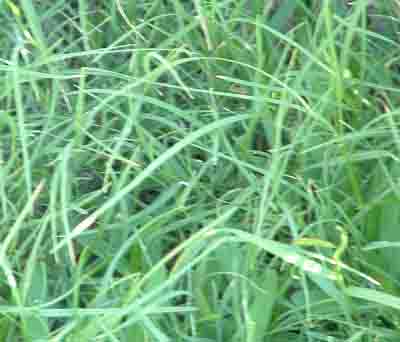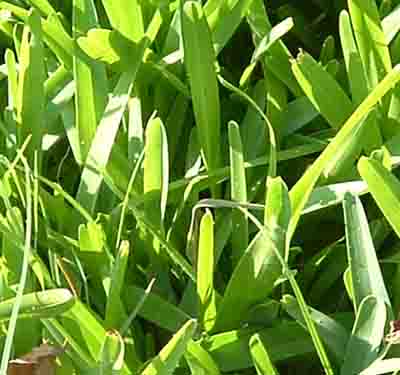How to plant a Buffalo grass lawn
What is Buffalo Grass ?
It is a grass indigenous to South Africa and is part of a species known as Stenotaphrum secundatum.
It has a number of common names which are: St Augustine grass, Crab grass or Mission grass.
It is a broad leafed grass which grows by means of runners and forms a dense mat.
There are two methods of planting a buffalo lawn.
Using lawn sods or cutting runners from an existing lawn, preparing them and planting them.
In both methods mentioned above the soil preparation is the same.
Soil Preparation
The first thing to do is to remove all the weeds in the ground you are preparing to plant your lawn. If you are going to plant Buffalo grass one of South Africa's indigenous grasses any Kikiyu grass in the ground being prepared should be removed as well.
If you are too lazy to pull out or dig out the weeds using a herbicide is the way to go. Use a broad spectrum herbicide to kill off the weeds and be careful when applying it as it will kill off other trees and shrubs in your garden if allowed to spread. Do not apply the herbicide when there is a wind blowing as this will cause the herbicide to spread to other plants in your garden.
After application of the herbicide allow about 14 days for it to do its work and then loosen the soil to a depth of about 100mm. For clayey or compacted soils it is necessary to mix in compost and course sand to allow oxygen into the soil and to facilitate drainage.
While digging the soil over you can also level the lawn if levelling is required.
Do not mix fertilizers in to the soil or roll the soil at this stage. If you want your grass to grow quickly the sods must be placed on loose soil to allow the roots of the sods to penetrate the soil. Applying fertilizers at this stage is not a good idea as they will be mixed down to a depth of a 100mm and the roots of the Buffalo grass will only penetrate 50mm into the loosened soil thus wasting a large amount of fertilizer.
Planting of Seeds
As Buffalo grass seed seems to be obtainable it is not an option. Other grass types produce seed and if you are planting them you can follow the procedure below.
If you are using seeds then this is the time to spread them over the prepared bed. For establishing a new lawn it is recommended to sow at a rate of about 50 grams of seed per square metre. If you are overseeding an area the recommendation is 25 grams per square metre.
Once the seeds have been laid down cover them with a layer of compost or top soil with fertilizer 2:3:2 mixed into the topsoil. Water the bed to compact the soil and roll with a roller to level the lawn.
Laying of sods.
When laying sods ensure that they are flat and make contact with the soil on which they are being laid. Do not leave airpockets beneath the sods as the roots will not make contact with the ground below and will eventually die.
Lay the sods against each other, do not leave gaps as you are leaving space for weeds to grow in. Once you have laid the sods a topsoil must be applied to the lawn and then the lawn must be properly watered.
Before applying the topsoil mix in a 2:3:2 fertilizer as this will promote root growth of the sods being planted.
The third method is one I use.
Buffalo grass runners
Find a Buffalo lawn where the grass is pretty long and runners have grown. Along the edge is a good place to find them. Cut the runners out of the lawn and then cut them into pieces about 50mm in length.
After preparing the area to be planted as set out above plant one 50mm snippet in a hole which you can make with a small dowel or pencil. Ensure that only half the snippet is buried underground.
Plant snippets about 20mm apart.
Once planted cover with a layer of topsoil mixed with a 2:3:2 fertilizer.
Water the newly planted lawn to compact the soil around the snippets of grass planted.
A mistake some people make is planting a lawn where there is no running water. A lawn cannot grow without water so ensure that you have a regular supply before planting your lawn.
Once the grass or seeds have been planted and the top soil applied water the lawn and roll it if you deem it necessary to do so.
After the initial watering it is necessary to keep your lawn wet for the first two weeks after planting by watering it twice a day for the first week and then once a day for the second week.
After about two weeks apply a 4.1.1 fertilizer which will encourage leaf growth on the lawns.
Once your lawn reaches 60mm in height it is time to start mowing it. The first cut should shorten the grass to about 40mm in length which will also force the grass to form a matted bed instead of sticking up into the air.
There are other seed mixtures of grass that can also be planted in South Africa.
 Kweek grass mixed with Buffalo
Kweek grass mixed with Buffalo
One popular mix is the Buffalo-Kweek mix. This mix is ideal for South African conditions and produces a lawn that is good for all seasons.
Kweek also known as Fynkweek, Bermuda grass, Couch grass is also indigenous to South Africa. This is a fineleafed grass which also grows by means of runners.
This strong mix of grasses has a number of positive attributes.
It can be planted all year round and is drought tolerant. Being indigenous it is more disease resistant than other grasses. It is salt and frost tolerant so can be grown close to the sea on sand dunes. It is a strong dark green shaded grass and handles traffic well.
Not being as invasive as the Kikiyu grass Buffalo is fast becoming the lawn of choice in South Africa.
© 2023 Garden-tips - All Rights Reserved
How to plant a new buffalo grass lawn
12.7.2023


 Kweek grass mixed with Buffalo
Kweek grass mixed with Buffalo